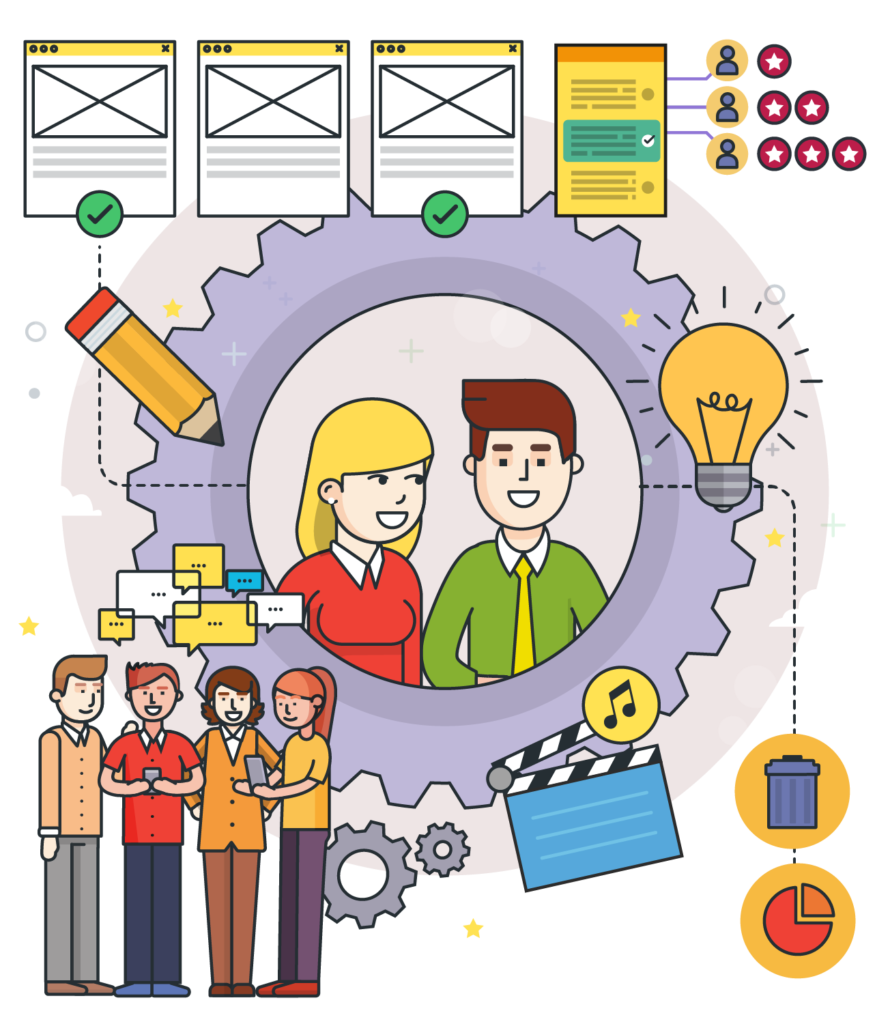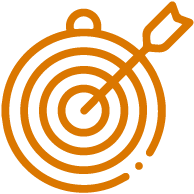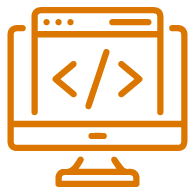
EFFECTIVE INSTRUCTIONAL DESIGN
Boost your business performance with an online instructional program designed around both your company’s objectives and the desired training outcomes.
We work side by side our customers in the definition of their training strategy.
We help them identify –among a number of variables– their needs in professional development; the business challenges; their learners’ profiles and the desired outcomes.
Life-cycle of Courseware
This global and systemic approach permeates all the stages in the development life-cycle of courseware developed by Actívica.

STEP 1
Defining Business Objectives and Performance Metrics
E-learning is effective only if it is consistent with your business objectives and helps your organization solve problems. After the company’s goals have been defined, Actívica will establish the metrics to link them to the specific learning outcomes to be achieved. This process will reveal “performance gaps” which will be bridged by developing custom-designed programs.

STEP 2
Identifying Users
Given that different learners have different learning curves and approaches, it is vital to identify the key attributes of our target audience (age, socio-cultural characteristics, level of expertise with new technologies and any prior knowledge on the subject matter). At Actívica we will help you understand the learner profiles at play in your organization.

STEP 3
Gathering Specialized Knowledge
Our team of Instructional Designers will help you “capture” the body of knowledge within your organization, meeting with the Subject Matter Experts and gathering information about the key areas that will make up the online training program. Alternatively, for projects in which our clients provide instructional design documents, we skip this step altogether.

STEP 4
Instructional Design
After defining goals and content Actívica will set out to ensure that the training course is relevant, concise, and effective. Harnessing the potential of multimedia technology, instructional scripts, or storyboards, will be written following a learner-centered approach that places the learner right in the middle of the E-learning experience. The goal will be to motivate learners, in order to optimize knowledge retention.

STEP 5
Development
The user experience must be appealing and intuitive, only then will it be possible to elicit a constant level of attention throughout the course. To make this possible, we use state-of-the-art interaction techniques and multimedia materials while always keeping in mind the technology resources available to the users (hardware, software and connectivity).

STEP 6
SCORM/xApi (TinCan) Implementation and Deployment on LMS
Our courses can easily run on any Learning Management System (LMS), either Proprietary or Open Source, available on the market. Users will be able to access the courses, swiftly and safely, self-evaluating their progress for future analysis and assessment.

STEP 7
Program Evaluation and Adjustments
In order to validate the effectiveness and relevance of the instructional content delivered via e-learning, it is necessary to assess learner performance and feedback on a regular basis and evaluate the degree of success in practicing the acquired knowledge. This information will be vital for measuring the Return on the Investment of the e-learning program and for ensuring permanent quality improvement.